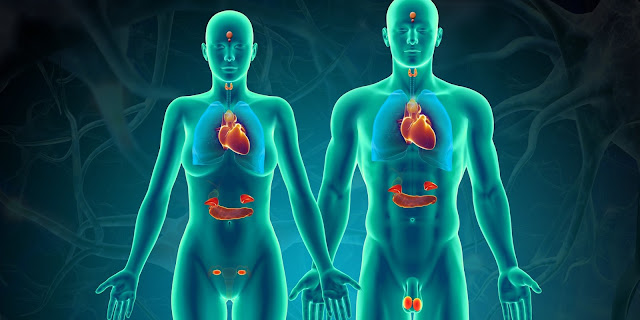U.S. Acellular Dermal Matrices: An Overview of Their Uses and Benefits in Medical Applications
 |
| U.S. Acellular Dermal Matrices |
What are Acellular Dermal
Matrices?
Acellular dermal
matrices, also known as acellular cadaveric dermal matrices or biologically
derived wound dressings, are human or animal originated dermal tissues that
have had cellular components removed. The process of decellularization leaves
behind a collagen-rich extracellular matrix scaffold that can be used for soft
tissue repair and reconstruction. By removing cellular components, the risk of
donor site morbidity or allograft rejection is greatly reduced. These acellular
tissues more closely resemble a patient's own tissues and can integrate well
with the host site.
Types of Acellular Dermal Matrices
There are a few main types of acellular dermal matrices used in medical
applications:
- Human Donor Tissue Matrices: Made from human donor cadaver skin that has
undergone a proprietary decellularization process to remove cells while
retaining the collagen matrix and growth factors. Popular brands include
AlloDerm, FlexHD, and DermaMatrix.
- Porcine/Bovine Tissue Matrices: Derived from porcine or bovine sources using
similar decellularization techniques. Brands include Strattice, Permacol, and
Surgimend.
- Biosynthetic Matrices: Completely synthetic scaffolds created in the
laboratory to mimic natural collagenous tissues. Examples are PriMatrix and
Matrix.
Uses in Breast Reconstruction
Acellular dermal matrices are commonly used in breast reconstructive
procedures such as tissue expander-based and implant-based breast
reconstruction. They provide tissue support to help shape and position
implants, especially in thin-skinned patients or those with partial mastectomy
defects.
In two-stage expander-to-implant reconstruction, an acellular dermal matrix is
often placed under the expander to allow for better lower pole fullness
compared to placement of the expander alone. It creates a new tissue barrier
between the expander and chest wall to prevent muscle from forming too tight a
capsule.
In implant-based reconstruction, an acellular dermal matrix is frequently used
to fill dead space under the breast implant and create an improved aesthetic
pocket with better implant positioning and symmetry. It integrates with the
host tissue, effectively extending the lower breast border and reducing
bottoming out.
Studies have shown the benefits of using acellular dermal matrices in breast
reconstruction to include decreased rates of capsular contracture, increased
satisfaction with contour and shape outcomes, and reduced need for additional
procedures like capsulotomy or fat grafting. Human donor acellular dermal
matrices like AlloDerm are considered the gold standard.
Other Applications of ADM in U.S.
Acellular Dermal Matrices
Beyond breast reconstruction, other common applications of acellular dermal
matrices include:
Abdominal Wall Reconstruction - Used for hernia repair and reconstruction of
abdominal defects. Acts as a biosynthetic mesh to reinforce weak tissues.
Orthopedic Surgery - As bone void fillers or substitutes for tendon/ligament
repairs. Examples include repair of rotator cuff tears.
General Soft Tissue Repair - Treatment of poorly healing wounds, diabetic
ulcers, and repairs of lacerations or surgical defects. The matrix serves as a
scaffold.
Gynecologic Surgery - Repair of pelvic organ prolapse or cystocele. Provides
support to weakened tissues.
Advantages and Potential Risks
The major advantages of acellular dermal matrices include their ability to
strengthen soft tissues, fill voids, and integrate with host tissues. This
makes them useful surgical adjuncts and scar treatment options. Potential risks
include delayed healing due to lack of early vascularization, infection, and
seroma formation. Cost is also usually higher than alternative treatments.
Further long-term studies are still needed regarding outcomes.
In summary, U.S.
Acellular Dermal Matrices represent an important class of biologically
derived surgical grafts useful across many medical specialties. Their
decellularized structure provides an ideal scaffold for tissue repair and
regrowth while avoiding risks of allograft rejection. Areas like breast
reconstruction have seen major benefits from judicious use of acellular dermal
matrices to improve cosmetic outcomes. Ongoing research continues to advance
these technologies and applications.
Get
more insights on U.S.
Acellular Dermal Matrices
About Author
Alice Mutum, is a seasoned senior
content editor at Coherent Market Insights, leveraging extensive expertise
gained from her previous role as a content writer. With seven years in content
development, Alice masterfully employs SEO best practices and cutting-edge
digital marketing strategies to craft high-ranking, impactful content. As an
editor, she meticulously ensures flawless grammar and punctuation, precise data
accuracy, and perfect alignment with audience needs in every research report.
Alice's dedication to excellence and her strategic approach to content make her
an invaluable asset in the world of market insights.
(LinkedIn: www.linkedin.com/in/alice-mutum-3b247b137 )



Comments
Post a Comment